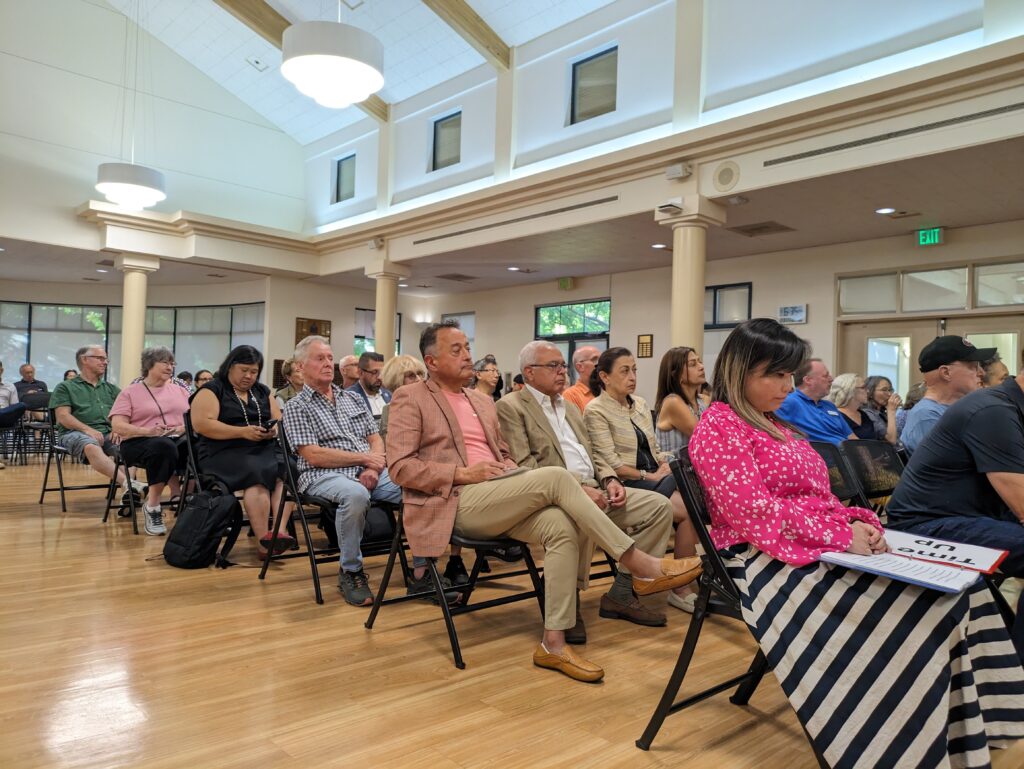A Santa Clara County hillside polluted for decades by a controversial cement plant and quarry is on the path to restoration.
Heidelberg Materials, which owns the Lehigh Permanente Quarry and Cement Plant, detailed its restoration plans for a roughly 1.7-mile stretch of Permanente Creek at an annual community meeting Thursday. Company representatives also gave updates on the reclamation plan for the 3,510-acre site. The creek restoration project will clear the waterway of thousands of tons of debris and contaminated sediment over the next five years, caused by decades of pollution from the cement plant and quarry in Santa Clara County’s foothills near Cupertino.
The work is expected to cost millions of dollars as the company returns the creek to its natural state that once harbored fish and wildlife. The restoration — which Heidelberg Materials is required to complete by 2030 after a Sierra Club pollution lawsuit and settlement — is slated to begin Wednesday in collaboration with the San Francisco Bay Regional Water Quality Control Board and Santa Clara County.
Greg Ronczka, vice president of environment and sustainability for Heidelberg’s North America division, said the company is glad to finally begin work on the project, which was first introduced in 2016. He appreciated having a seat at the table at the annual meeting, which hadn’t happened in years past.
“It’s a sort of a turning point for the facility,” he told San José Spotlight. “This is the start of these projects. It’s the start of a new chapter.”

Katja Irvin, Guadalupe Group Conservation chair of the Sierra Club Loma Prieta chapter, said the pollution of selenium and nickel from the quarry and plant in the creek are detrimental to the environment. The creek runs into the San Francisco Bay and was home to the threatened steelhead trout.
Irvin said the Sierra Club is relieved the restoration is finally happening after years of delays, adding the organization will be monitoring Heidelberg Materials to ensure it’s done right.
“The whole creek has been kind of overloaded with selenium, and so hopefully this will allow removing that overburden from the mining,” she told San José Spotlight. “The whole water quality in the creek in general is going to be a big plus.”
The creek restoration is part of a larger effort to transform the polluted site back to its natural state. The entire reclamation plan is undergoing environmental review before work can start, and a report will be published in January. There is no timeline for the project yet, but it will require filling the cement plant and quarry hole with 44 million cubic yards of material to prevent further pollution from leaching out.
In the meantime, Heidelberg Materials is conducting pre-demolition work on the 35 to 40 structures on-site to ensure asbestos isn’t unsafely released in the air. Vulcan Materials also has an aggregate business on-site, where it takes old rock off-site to crush and sell.
District 5 Santa Clara County Supervisor Margaret Abe-Koga, who represents the area and hosted the meeting, said the reclamation process is going to require significant oversight so it’s done right. The project includes stakeholders such as the county’s environmental health and planning departments.
“It’s really about working with (Heidelberg), closely monitoring their progress, asking tough questions when they need to be asked,” Abe-Koga told San José Spotlight.
The projects come after about a century of quarry limestone mining and 80 years of cement plant operations. Those building materials helped construct San Jose Mineta International Airport and parts of the Golden Gate Bridge.
But it also led to widespread pollution that closed the cement kiln and Permanente Quarry for good in 2023. Prior to its closure, a 2022 report revealed the site had more than 2,100 violations, with more than 100 considered serious, between 2012 and 2021.
Residents are still uncertain if Heidelberg Materials and the county can fully fix the damage done to the environment.
Cupertino resident Rhoda Fry, a longtime activist against the cement plant and quarry, was one of the dozens of people who attended the meeting. She said the government’s wheels move too slowly for something this urgent.
“It is evident that there is a lack of institutional knowledge and a lack of communication between the agencies,” she told San José Spotlight. “As a result, the residents lose.”
Ronczka said Heidelberg Materials is working on rebuilding community trust. The company plans on hosting listening sessions where residents can weigh in on the site’s future.
“We have hundreds of facilities in North America that we routinely extract from and then reclaim. So this isn’t any different than many of these other locations,” he said. “It’s what we need to do as a responsible building materials company.”
Contact Annalise Freimarck at [email protected] or follow @annalise_ellen on X.



Leave a Reply
You must be logged in to post a comment.